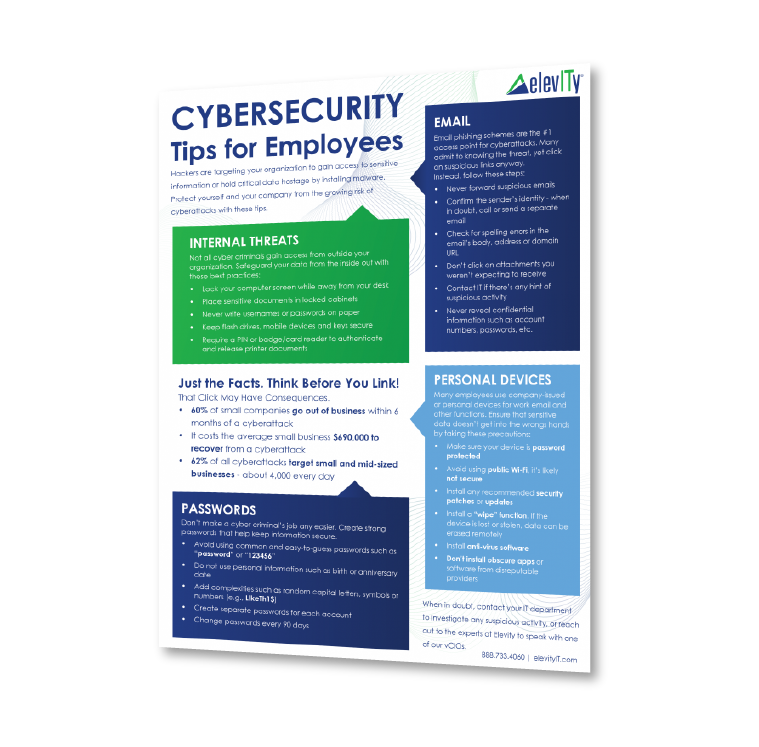By the time you finish reading this sentence, it’s possible that another new artificial intelligence (AI) tool was released.
That’s how fast and frequent AI tools seem to pop up in today’s world. If it’s not generative AI such as ChatGPT, Claude or other standalone AI systems, it’s a supplement to existing suites of products. Microsoft, for example, offers such AI assistance as Copilot Studio, Azure AI Studio and more.
Are you looking to implement an existing or original AI solution for your business? If so, how do you measure success in this AI project? Whether creating your own AI tool or opting to onboard an existing one, there are five essential performance metrics to keep in mind.
- What is the problem, and is AI solving it?
- Define attainable objectives
- Is AI making your business better?
- Track previously unavailable technical functions
- Are your employees and customers satisfied?
1. What is the Problem, and is AI Solving It?
Are you using AI just to see what it’s all about, or do you have an actual objective in mind? Think about why you need AI. What are your existing problems or concerns? In what ways could AI — often tasked with completing menial or repetitive jobs — help you overcome this problem? The answer to those questions could ultimately lead you to your biggest return on investment (ROI).
Brainstorm a list or conduct a survey of existing conditions and user (employee, customer) satisfaction to find your baseline. You can then take a survey of the same users after implementation to document their opinions of the project. Has AI solved the problem? Survey results should then be combined with project administration feedback to determine the project’s overall success.
2. Define Attainable Objectives
As sophisticated as it is, AI isn’t necessarily meant to be the answer to all your ailments. If you plan to create it or use it, set your expectations to “realistic.”
How can AI support your organization? What is AI “good at” (or not), and what is a reasonable outcome? Which business objectives or policies does the application advance? Or is this project a preliminary opportunity to help develop something else?
Identify which lines of business will support the application and whether it will increase efficiency, customer/user satisfaction, quality of research or response and offer a competitive advantage.
3. Is AI Making Your Business Better?
When a business adopts AI to manage business processes, it wants to see speed or efficiency gains. Do you have a clear understanding of your business processes and how the new AI solution will fit with your existing business?
Consider an AI document management system designed to find deeper and more relevant information from a collection of documents than an old-fashioned keyword search, for example. That project may include measures such as the time to respond, number of accurate hits on the first query, percent of questions answered in a first support call or the total number of unique additional hits above normal search functions.
Any evaluation of your AI project should list items that describe how it looks if it’s a success.
Related: The Role of AI in IT Support
4. Track Previously Unavailable Technical Functions
Your AI project scope should anticipate and detail meaningful measures of success and compare them against pre-project functionality.
Keep track of all the technical functions or features that weren’t available in the previous system. For instance, if you create a new AI chatbot offering more naturalistic speech patterns, the natural speech pattern itself could be a technical function you didn’t have before.
5. Are Your Employees and Customers Satisfied?
An AI project can’t be successful if users have a bad experience. If the AI tool adds unnecessary time or hassle or frequently comes up with incorrect information, that’s not acceptable. Every AI tool should be enhancing the user experience. But how can you tell if that’s actually happening?
First, define the use case, outlining what the users would like the AI tool to deliver. Then, to make these subjective and qualitative measures meaningful, capture a picture of the current state of user satisfaction. The project needs to include a comprehensive understanding of the current user experience and level of satisfaction compared to post-installation to determine if it’s working.
Learn More: AI Cybersecurity and Liability Concerns
AI: One Tool Among Many
We’re major believers in the future of AI in the office technology industry. But we also believe it’s important to think critically about how AI fits with your business and helps people perform their work better and more efficiently — not replace them.
With that mindset, you can see AI as one tool in the chest of every item of technology you need to meet your business goals. But what else should you have? We’ve created a handy checklist that offers suggestions and lets you audit your tech stack to see what you might still need.
Click the link below to access a copy of The Definitive IT Checklist for Businesses today!





%20cropped.jpg)



